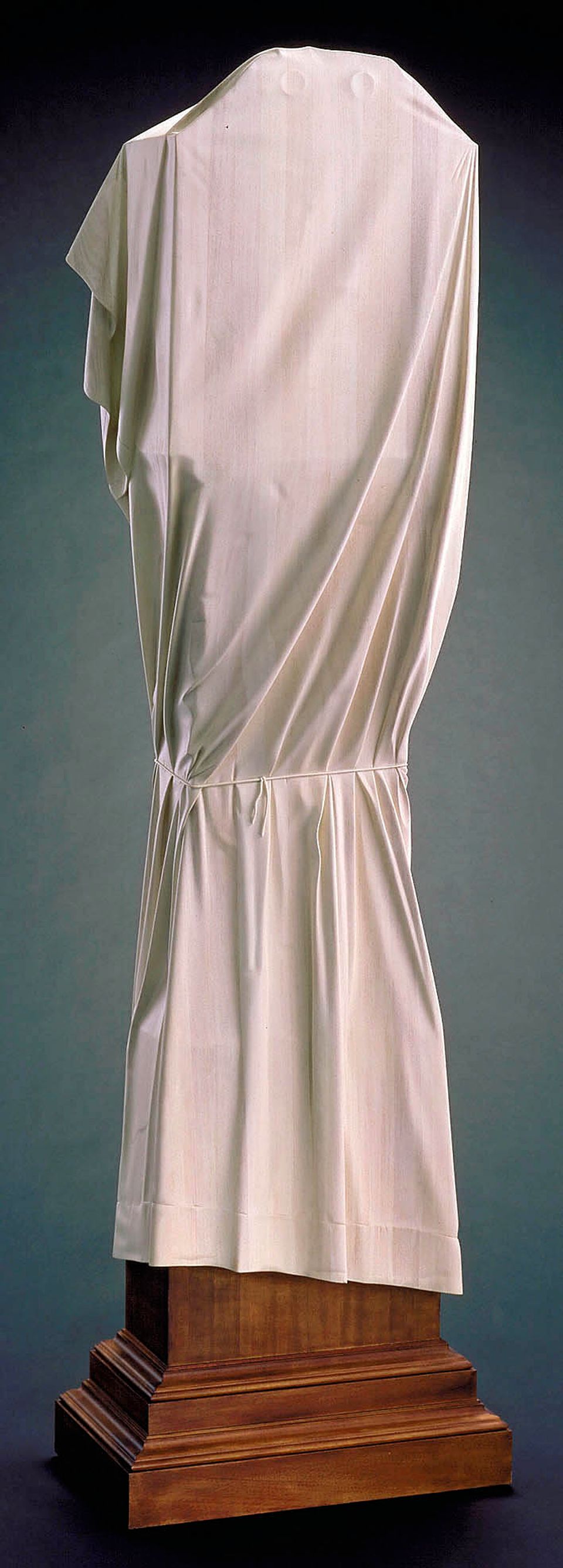
This post is part of an ongoing series on Eye Level: The Best of Ask Joan of Art. Begun in 1993, Ask Joan of Art is the longest-running arts-based electronic reference service in the country. The real Joan is Kathleen Adrian or one of her co-workers from the museum’s Research and Scholars Center. These experts answer the public's questions about art. Earlier this year, Kathleen began posting questions on Twitter and made the answers available on our Web site.
Question: At the museum's Renwick Gallery, I saw a grandfather clock covered in a white cloth, but I can't remember the artist or title of this work.
Answer: You are referring to the sculpture Ghost Clock by Wendell Castle.
Castle's clever work is neither a classic grandfather clock nor a statement about time. His magnificent Ghost Clock is a haunting sculpture that is so still it suggests eternity. Constructed from laminated and bleached Honduras mahogany, it is a powerful example of trompe l'oeil, a French term that means "to fool the eye." Here, the drapery is not supple cloth but beautifully carved wood that looks like muslin in color and texture. What we think we see is, in fact, not what is.
Castle's piece was part of the exhibition Renwick at 25, which celebrated the Renwick Gallery's twenty-fifth anniversary. But you can still see it on display on the Renwick's second floor. For further information about the artist and his work, take a look at the book Skilled Work: American Craft in the Renwick Gallery.


















